Martin Mundt
Scaling Probabilistic Circuits via Data Partitioning
Mar 11, 2025Abstract:Probabilistic circuits (PCs) enable us to learn joint distributions over a set of random variables and to perform various probabilistic queries in a tractable fashion. Though the tractability property allows PCs to scale beyond non-tractable models such as Bayesian Networks, scaling training and inference of PCs to larger, real-world datasets remains challenging. To remedy the situation, we show how PCs can be learned across multiple machines by recursively partitioning a distributed dataset, thereby unveiling a deep connection between PCs and federated learning (FL). This leads to federated circuits (FCs) -- a novel and flexible federated learning (FL) framework that (1) allows one to scale PCs on distributed learning environments (2) train PCs faster and (3) unifies for the first time horizontal, vertical, and hybrid FL in one framework by re-framing FL as a density estimation problem over distributed datasets. We demonstrate FC's capability to scale PCs on various large-scale datasets. Also, we show FC's versatility in handling horizontal, vertical, and hybrid FL within a unified framework on multiple classification tasks.
Continual Learning Should Move Beyond Incremental Classification
Feb 17, 2025Abstract:Continual learning (CL) is the sub-field of machine learning concerned with accumulating knowledge in dynamic environments. So far, CL research has mainly focused on incremental classification tasks, where models learn to classify new categories while retaining knowledge of previously learned ones. Here, we argue that maintaining such a focus limits both theoretical development and practical applicability of CL methods. Through a detailed analysis of concrete examples - including multi-target classification, robotics with constrained output spaces, learning in continuous task domains, and higher-level concept memorization - we demonstrate how current CL approaches often fail when applied beyond standard classification. We identify three fundamental challenges: (C1) the nature of continuity in learning problems, (C2) the choice of appropriate spaces and metrics for measuring similarity, and (C3) the role of learning objectives beyond classification. For each challenge, we provide specific recommendations to help move the field forward, including formalizing temporal dynamics through distribution processes, developing principled approaches for continuous task spaces, and incorporating density estimation and generative objectives. In so doing, this position paper aims to broaden the scope of CL research while strengthening its theoretical foundations, making it more applicable to real-world problems.
The Cake that is Intelligence and Who Gets to Bake it: An AI Analogy and its Implications for Participation
Feb 06, 2025Abstract:In a widely popular analogy by Turing Award Laureate Yann LeCun, machine intelligence has been compared to cake - where unsupervised learning forms the base, supervised learning adds the icing, and reinforcement learning is the cherry on top. We expand this 'cake that is intelligence' analogy from a simple structural metaphor to the full life-cycle of AI systems, extending it to sourcing of ingredients (data), conception of recipes (instructions), the baking process (training), and the tasting and selling of the cake (evaluation and distribution). Leveraging our re-conceptualization, we describe each step's entailed social ramifications and how they are bounded by statistical assumptions within machine learning. Whereas these technical foundations and social impacts are deeply intertwined, they are often studied in isolation, creating barriers that restrict meaningful participation. Our re-conceptualization paves the way to bridge this gap by mapping where technical foundations interact with social outcomes, highlighting opportunities for cross-disciplinary dialogue. Finally, we conclude with actionable recommendations at each stage of the metaphorical AI cake's life-cycle, empowering prospective AI practitioners, users, and researchers, with increased awareness and ability to engage in broader AI discourse.
Aligning Generalisation Between Humans and Machines
Nov 23, 2024



Abstract:Recent advances in AI -- including generative approaches -- have resulted in technology that can support humans in scientific discovery and decision support but may also disrupt democracies and target individuals. The responsible use of AI increasingly shows the need for human-AI teaming, necessitating effective interaction between humans and machines. A crucial yet often overlooked aspect of these interactions is the different ways in which humans and machines generalise. In cognitive science, human generalisation commonly involves abstraction and concept learning. In contrast, AI generalisation encompasses out-of-domain generalisation in machine learning, rule-based reasoning in symbolic AI, and abstraction in neuro-symbolic AI. In this perspective paper, we combine insights from AI and cognitive science to identify key commonalities and differences across three dimensions: notions of generalisation, methods for generalisation, and evaluation of generalisation. We map the different conceptualisations of generalisation in AI and cognitive science along these three dimensions and consider their role in human-AI teaming. This results in interdisciplinary challenges across AI and cognitive science that must be tackled to provide a foundation for effective and cognitively supported alignment in human-AI teaming scenarios.
Core Tokensets for Data-efficient Sequential Training of Transformers
Oct 08, 2024



Abstract:Deep networks are frequently tuned to novel tasks and continue learning from ongoing data streams. Such sequential training requires consolidation of new and past information, a challenge predominantly addressed by retaining the most important data points - formally known as coresets. Traditionally, these coresets consist of entire samples, such as images or sentences. However, recent transformer architectures operate on tokens, leading to the famous assertion that an image is worth 16x16 words. Intuitively, not all of these tokens are equally informative or memorable. Going beyond coresets, we thus propose to construct a deeper-level data summary on the level of tokens. Our respectively named core tokensets both select the most informative data points and leverage feature attribution to store only their most relevant features. We demonstrate that core tokensets yield significant performance retention in incremental image classification, open-ended visual question answering, and continual image captioning with significantly reduced memory. In fact, we empirically find that a core tokenset of 1\% of the data performs comparably to at least a twice as large and up to 10 times larger coreset.
Distribution-Aware Replay for Continual MRI Segmentation
Jul 30, 2024

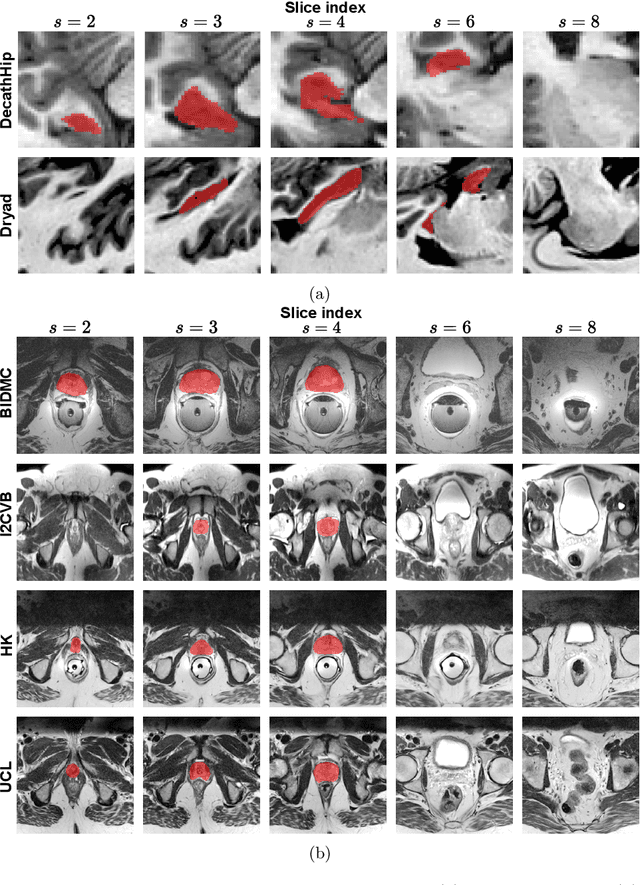

Abstract:Medical image distributions shift constantly due to changes in patient population and discrepancies in image acquisition. These distribution changes result in performance deterioration; deterioration that continual learning aims to alleviate. However, only adaptation with data rehearsal strategies yields practically desirable performance for medical image segmentation. Such rehearsal violates patient privacy and, as most continual learning approaches, overlooks unexpected changes from out-of-distribution instances. To transcend both of these challenges, we introduce a distribution-aware replay strategy that mitigates forgetting through auto-encoding of features, while simultaneously leveraging the learned distribution of features to detect model failure. We provide empirical corroboration on hippocampus and prostate MRI segmentation.
Where is the Truth? The Risk of Getting Confounded in a Continual World
Feb 09, 2024Abstract:A dataset is confounded if it is most easily solved via a spurious correlation which fails to generalize to new data. We will show that, in a continual learning setting where confounders may vary in time across tasks, the resulting challenge far exceeds the standard forgetting problem normally considered. In particular, we derive mathematically the effect of such confounders on the space of valid joint solutions to sets of confounded tasks. Interestingly, our theory predicts that for many such continual datasets, spurious correlations are easily ignored when the tasks are trained on jointly, but it is far harder to avoid confounding when they are considered sequentially. We construct such a dataset and demonstrate empirically that standard continual learning methods fail to ignore confounders, while training jointly on all tasks is successful. Our continually confounded dataset, ConCon, is based on CLEVR images and demonstrates the need for continual learning methods with more robust behavior with respect to confounding.
BOWLL: A Deceptively Simple Open World Lifelong Learner
Feb 07, 2024Abstract:The quest to improve scalar performance numbers on predetermined benchmarks seems to be deeply engraved in deep learning. However, the real world is seldom carefully curated and applications are seldom limited to excelling on test sets. A practical system is generally required to recognize novel concepts, refrain from actively including uninformative data, and retain previously acquired knowledge throughout its lifetime. Despite these key elements being rigorously researched individually, the study of their conjunction, open world lifelong learning, is only a recent trend. To accelerate this multifaceted field's exploration, we introduce its first monolithic and much-needed baseline. Leveraging the ubiquitous use of batch normalization across deep neural networks, we propose a deceptively simple yet highly effective way to repurpose standard models for open world lifelong learning. Through extensive empirical evaluation, we highlight why our approach should serve as a future standard for models that are able to effectively maintain their knowledge, selectively focus on informative data, and accelerate future learning.
Continual Learning: Applications and the Road Forward
Nov 21, 2023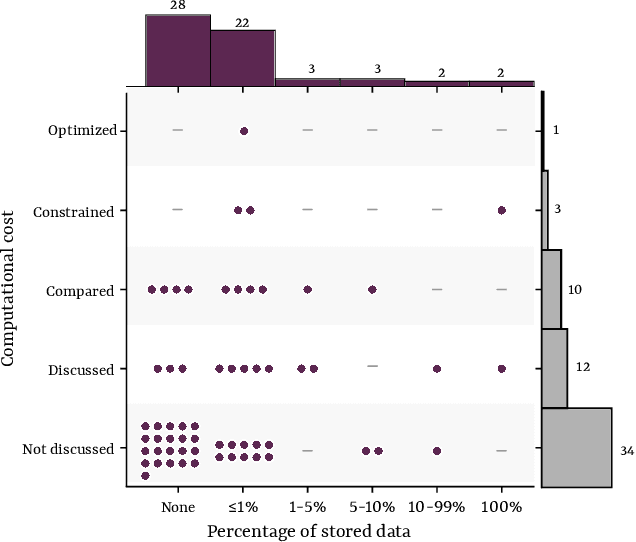
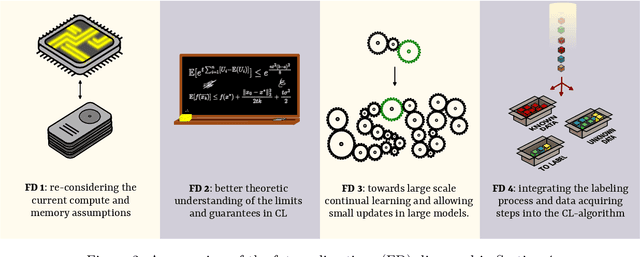
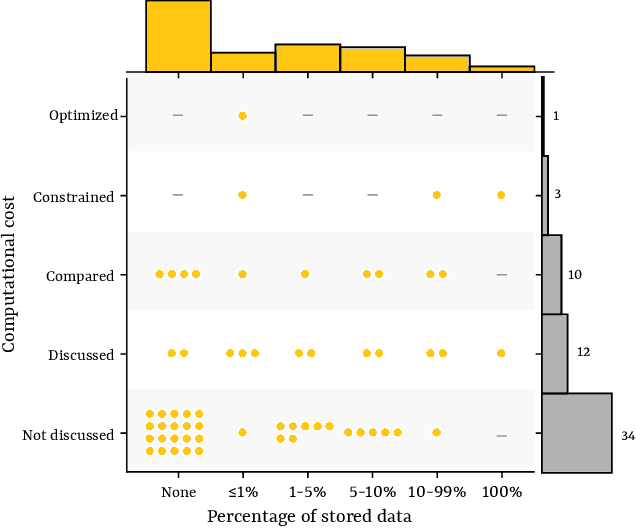
Abstract:Continual learning is a sub-field of machine learning, which aims to allow machine learning models to continuously learn on new data, by accumulating knowledge without forgetting what was learned in the past. In this work, we take a step back, and ask: "Why should one care about continual learning in the first place?". We set the stage by surveying recent continual learning papers published at three major machine learning conferences, and show that memory-constrained settings dominate the field. Then, we discuss five open problems in machine learning, and even though they seem unrelated to continual learning at first sight, we show that continual learning will inevitably be part of their solution. These problems are model-editing, personalization, on-device learning, faster (re-)training and reinforcement learning. Finally, by comparing the desiderata from these unsolved problems and the current assumptions in continual learning, we highlight and discuss four future directions for continual learning research. We hope that this work offers an interesting perspective on the future of continual learning, while displaying its potential value and the paths we have to pursue in order to make it successful. This work is the result of the many discussions the authors had at the Dagstuhl seminar on Deep Continual Learning, in March 2023.
Designing a Hybrid Neural System to Learn Real-world Crack Segmentation from Fractal-based Simulation
Sep 18, 2023
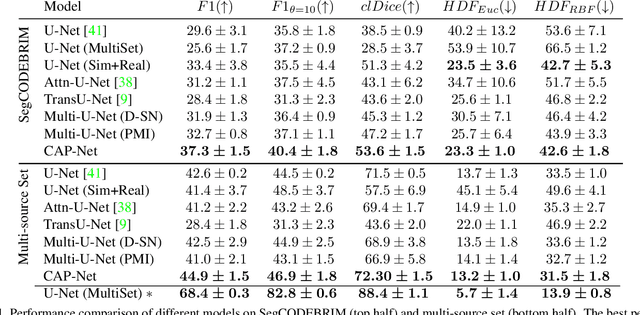
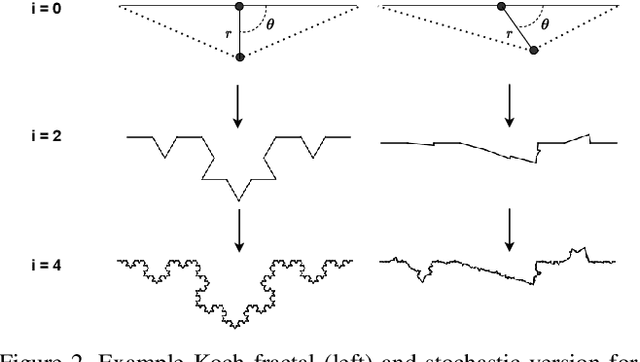
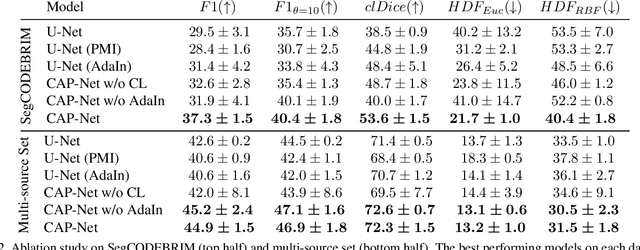
Abstract:Identification of cracks is essential to assess the structural integrity of concrete infrastructure. However, robust crack segmentation remains a challenging task for computer vision systems due to the diverse appearance of concrete surfaces, variable lighting and weather conditions, and the overlapping of different defects. In particular recent data-driven methods struggle with the limited availability of data, the fine-grained and time-consuming nature of crack annotation, and face subsequent difficulty in generalizing to out-of-distribution samples. In this work, we move past these challenges in a two-fold way. We introduce a high-fidelity crack graphics simulator based on fractals and a corresponding fully-annotated crack dataset. We then complement the latter with a system that learns generalizable representations from simulation, by leveraging both a pointwise mutual information estimate along with adaptive instance normalization as inductive biases. Finally, we empirically highlight how different design choices are symbiotic in bridging the simulation to real gap, and ultimately demonstrate that our introduced system can effectively handle real-world crack segmentation.
 Add to Chrome
Add to Chrome Add to Firefox
Add to Firefox Add to Edge
Add to Edge